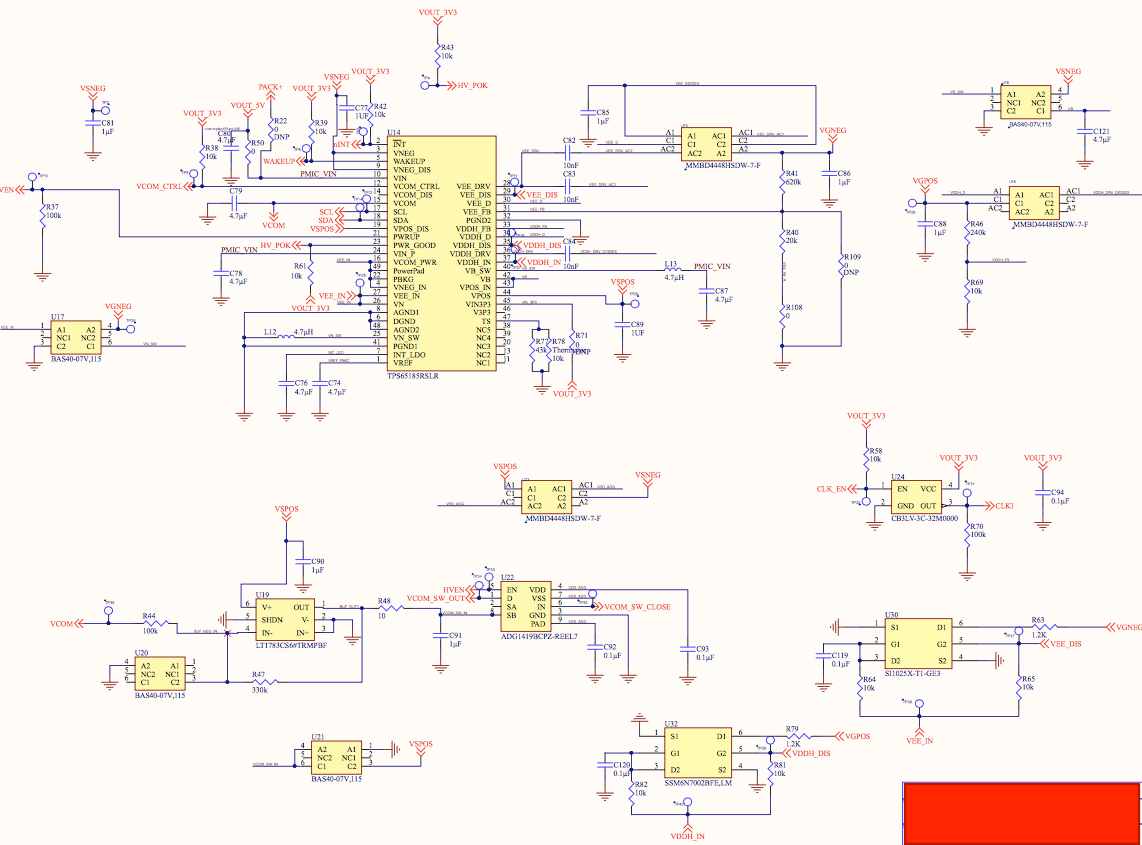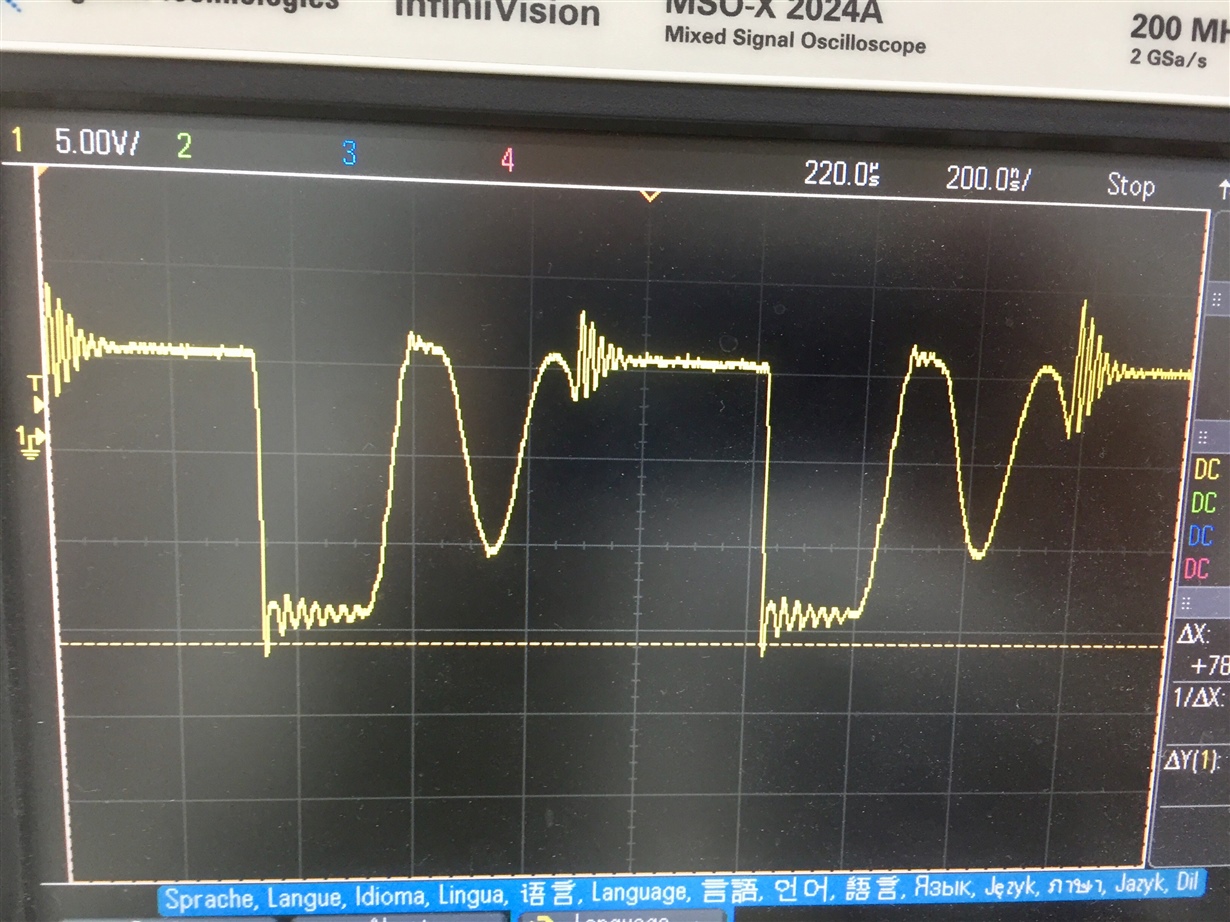Happy holidays !
Some of us need to work during Christmas and having issues with the TPS65185...
Setup is a new board, proved design and basic typical application schematics implemented. while powering up the WAKEUP and POWERUP signals by order, the device is alive and I2C operates. But, power rails are down and VCOMF is reported via INT2 register (value is 0x04).
The issue is that VCOM_CTRL is kept LOW and while measuring VCOM it shows ~0v. VCOM1 & VCOM2 registers reflects their default value. Even setting VCOM to 0x0 does not show any change.
Also, using the I2C to POWERUP - writing 0x80 to ENABLE (0x01) register behaves the same .
VN signal is attached. VB is constantly on 5v (=VIN) .
Any idea what might cause this?
thanks a lot for your help in advance!



